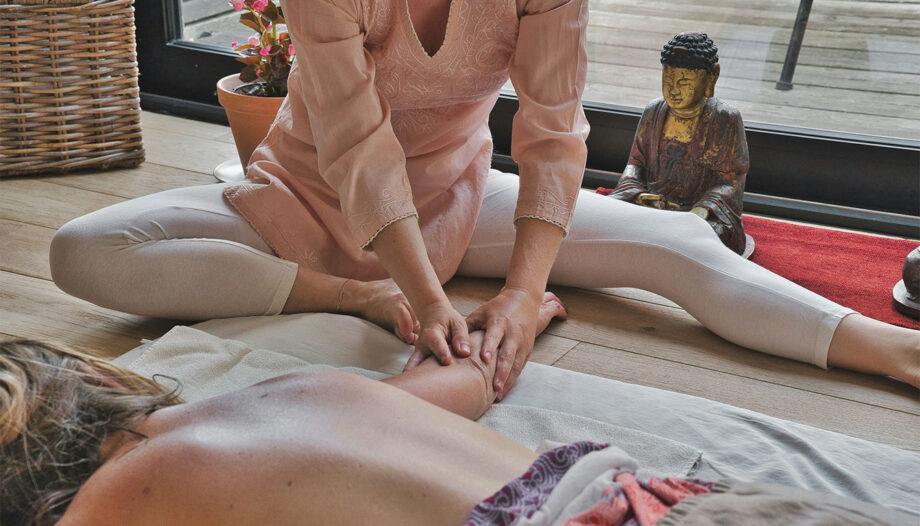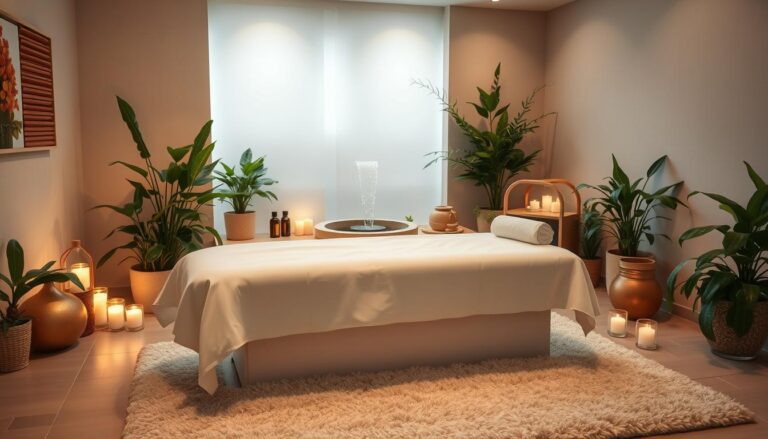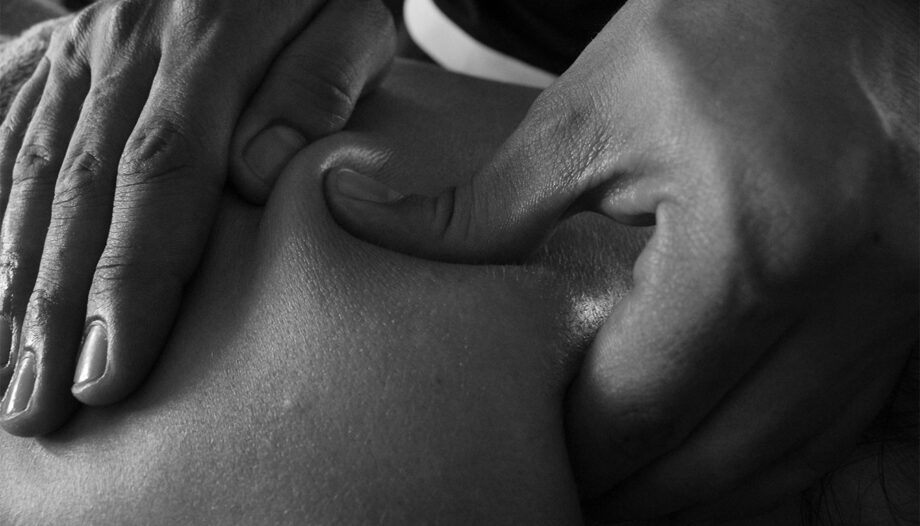Massage supports the body and mind today with clear short-term relief and longer-term gains that make everyday life easier.
Nearly one in five adults had a session in the past year, with many people choosing it for pain control, soreness or rehab. Trials show benefits for low back pain, knee osteoarthritis, hand arthritis and fibromyalgia, with reports of less pain, better movement and easier daily function.
Science of touch reveals changes in stress hormones and inflammatory markers, and boosts in serotonin that link to calmer mood and lower blood pressure. This shows the therapy is more than a spa treat; it is a supportive approach that fits alongside medical care.
Read on for quick benefits, the biology behind the effects, suitable techniques and safe choice tips. For a practical example of therapy that blends reflexology and body work, see Zen foot reflexology and body treatment.
Key Takeaways
- Offers fast feel-good relief and longer-term improvements in pain and movement.
- Backed by trials for several chronic conditions and everyday soreness.
- Touch alters hormones and inflammation linked to mood and blood pressure.
- Works best as part of a broader care plan, matched to goals and condition.
- Qualified practitioners and clear communication make sessions safe and effective.
Massage benefits at a glance: physical and mental gains you can feel
Short sessions often bring quick relief. Research shows cortisol tends to fall while serotonin and oxytocin rise, which helps people move from tense to calm within one sitting. These chemical shifts link to reduced stress and a steadier mood.
Trials report real gains for persistent conditions. For fibromyalgia, regular treatment over several weeks improves pain, anxiety and depression. In chronic low back pain, ten weekly sessions gave better pain control and function than usual care.
Local circulation improves during treatment, delivering oxygen and nutrients to tired muscles and clearing waste. That boost explains why tissues feel warmer and post-exercise recovery is often quicker.
Immune markers shift too: reductions in inflammatory signals and rises in white blood cells support the lymphatic system and overall tissue comfort. Many people also notice fewer tension headaches, freer joints and easier posture after a short course of focused work.
- Relaxation and deeper sleep as the nervous system settles.
- Reduced pain and less day-to-day tension for joints and muscles.
- Improved circulation and faster recovery after exertion.
How can massage help my health and wellbeing: what the research and physiology show
Research shows specific biological shifts after treatment that match the feelings people report. Changes in cortisol and arginine‑vasopressin link to a calmer mood and lower blood pressure during and after sessions.
The stress response
Lowering the stress hormone pathway reduces sympathetic arousal. Trials display steady falls in cortisol, which helps the autonomic system settle and anxiety feel less intense.
Why pressure matters
Moderate pressure stimulates deep pressure receptors under the skin. Studies report that this level, rather than light touch, is the key trigger for symptom reduction and stronger short‑term effects.
Circulation and lymph
Improved circulation and lymphatic flow boost nutrient delivery and speed waste removal. Better blood flow to muscles helps ease stiffness and supports recovery after exertion.
Pain modulation
Pleasant touch triggers gate‑control mechanisms in the nervous system and studies show falls in inflammatory cytokines. Together, these effects lower pain intensity and improve function.
Sleep and mood pathways
Serotonin rises during treatment support melatonin production, which promotes deeper sleep. Better rest then reinforces emotional balance and clearer daytime energy.
“When pressure, timing and consistency match the need, notable improvements in pain and movement follow.”
Choosing the right massage and staying safe in the UK
A clear plan—technique, timing and therapist choice—keeps sessions safe and effective. Match the approach to your goal and any medical issues before booking.
Swedish, deep tissue and sports: which suits your goals?
Swedish therapy uses light strokes, kneading and tapping to ease aches, boost circulation and support sleep. It is a good starting point for general relaxation.
Deep tissue and sports work target deeper layers to break adhesions from micro‑trauma. They aid recovery after training and reduce post‑exercise soreness.
Pregnancy care: benefits for mum and baby
Choose a pregnancy‑trained therapist. With correct positioning and adapted pressure, sessions reduce back and leg discomfort, ease anxiety and support immune and hormonal shifts. Evidence links skilled care to lower risk of pre‑term birth and higher birth weight in some studies.
Spa relaxation versus clinical treatment
Spa settings offer immersive relaxation, often with aromatherapy. Clinics focus on assessment and targeted treatment for persistent back or neck problems.
Evidence-led picks
Research supports structured programmes for chronic low back pain, knee osteoarthritis, hand arthritis and fibromyalgia. Consistent weekly work often gives best results for pain and function.
Safety first and practical tips
Tell your therapist about recent injuries, flares, medication and sensitive joints. Avoid sessions during fever, active skin rash or severe osteoporosis. If pressure hurts, say so and stop.
| Goal | Recommended approach | When to choose a clinic |
|---|---|---|
| General easing and circulation | Swedish | No specific concerns; desire for relaxation |
| Training recovery or stubborn tightness | Sports / deep tissue | Recent injuries or planned return to sport |
| Pregnancy comfort | Pregnancy-trained therapist | High-risk pregnancy or complications |
| Persistent pain conditions | Clinic with assessment-led treatment | Chronic back, knee OA, hand arthritis, fibromyalgia |
- Plan sessions with recovery time—avoid heavy work immediately after hard training.
- Hydrate, rest and agree on pressure before the session starts.
- Use research-led programmes for long-term conditions; short courses may ease stress and improve function.
Conclusion
, When sessions are tailored to need and delivered by a qualified therapist, noticeable change follows. Consistent therapy often lowers cortisol and related stress signalling, boosts blood flow, and eases pain in conditions such as low back pain, knee osteoarthritis and fibromyalgia.
Think of treatment as one supportive part of a wider plan. Combine it with sensible movement, paced training loads and medical advice after injury. Agree on pressure that suits your muscles and joints, and keep clear communication so sessions stay safe.
In short, structured work over time improves circulation, sleep and mood. Small, regular visits can reduce tension, ease headaches and help you move more freely in daily life.
FAQ
What are the main physical and mental gains from regular massage?
Regular treatment reduces muscle tension, eases back and neck pain and improves joint mobility. It boosts circulation and lymphatic flow, which aids recovery after injury or sport. Mentally, sessions lower stress hormone levels and raise mood-supporting chemicals, helping with anxiety, better sleep and a calmer outlook.
Which symptoms respond best to massage — pain, headaches or sleep problems?
Many people notice quick relief from tension headaches, chronic back pain and sore neck muscles. Massage also eases symptoms of arthritis and fibromyalgia for some. Improved relaxation often leads to deeper sleep, especially when sessions are consistent.
How does pressure in treatment affect outcomes?
Moderate, sustained pressure stimulates mechanoreceptors and alters pain signalling, while very light or very deep pressure suit different goals. Therapists choose techniques — Swedish for relaxation, deeper work for chronic tension — to match symptom severity and client tolerance.
Can massage reduce inflammation and support the immune system?
Sessions enhance lymphatic circulation and may lower certain inflammatory markers, which supports tissue repair and immune function. While it isn’t a cure, it complements medical care and helps the body clear waste products more efficiently.
What does research say about hormones like cortisol, serotonin and oxytocin?
Evidence shows massage often lowers cortisol, the stress hormone, while increasing serotonin and oxytocin linked to mood and social bonding. These shifts help reduce anxiety, improve sleep and promote relaxation when treatments are repeated.
Which techniques suit athletes or people recovering from injury?
Sports massage, myofascial release and targeted deep-tissue work aid recovery by improving circulation and reducing scar tissue. Timing matters: pre-event work prepares muscles; post-event promotes recovery. Always inform the therapist about injuries so they can adapt pressure and methods.
How should I choose between a spa-style session and clinical therapy?
Choose spa-style sessions for relaxation and general stress relief. Seek clinical physiotherapy or specialist massage for chronic pain, rehabilitation or specific diagnoses like knee osteoarthritis. Good therapists explain aims and adapt techniques to your needs.
Are there any safety concerns or contraindications in the UK?
Inform your therapist about recent surgery, deep vein thrombosis, infections, pregnancy, cancer treatment or blood-thinning medication. Some conditions require GP clearance. Qualified therapists follow safety guidelines on pressure, positioning and hygiene.
Is pregnancy massage safe and what are the benefits?
Pregnancy massage by a trained practitioner can reduce back pain, ease pelvic discomfort and lower stress. Therapists use positions and pressure suitable for each trimester and avoid contraindicated points. Always confirm qualifications before booking.
How often should I have treatment for lasting benefits?
Frequency depends on goals: weekly sessions suit chronic pain or rehabilitation, fortnightly to monthly sessions help with maintenance and stress management. Combine treatments with self-care — stretching, hydration and rest — for better long-term results.
Can massage help with mood disorders like depression and anxiety?
Massage is a useful adjunct to medical care for anxiety and mild to moderate depression. It promotes relaxation, improves sleep and raises calming neurotransmitters, but it should not replace prescribed treatments or therapy when indicated.
What practical tips improve results after a session?
Drink water to aid circulation and toxin clearance, avoid strenuous exercise for 24 hours if muscles feel tender, and use gentle stretching to maintain mobility. Book sessions at times that allow rest afterwards to enhance sleep and recovery.
Which conditions have the strongest evidence for benefit?
Evidence is strongest for chronic low back pain, some forms of knee osteoarthritis and certain types of myofascial pain and tension-type headaches. Research supports improvements in pain, function and quality of life when massage is part of a broader care plan.
How do therapists tailor sessions to sore or sensitive joints?
Therapists adjust pressure, avoid inflamed areas and use supportive positions to protect joints. They may combine gentle mobilisation, lymphatic techniques and soft tissue work to reduce pain without stressing compromised structures.






